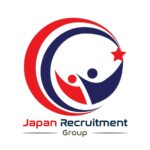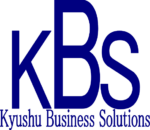
As we enter 2018, for many it is time to look forward to the upcoming year and ask yourself if your job and career prospects will be better, worse, or remain the same for the next year. One sure way of moving towards ‘better’ is by articulating your goals.
Something taught in business programs that everyone needs to consider is using a systematic approach to goals and goal setting. This concept is taught for a good reason: goal setting works. Study after study has proven that the most effective business people use goal setting to become high achievers and to get a lot more done. In fact, many successful Japanese firms have plans that project one hundred years into the future!
An essential and far-reaching way to decide how your resources and time should be spent (and how the goals should be made clear) is to step back to view the ‘bigger picture’ of your professional life. If you are not sure then you may need to take time to decide what your long-term objectives are going to be. Where are you expecting to be in a year, a few years, or even a decade from now? Envisioning where you plan to be will help you to clarify and list your goals, but keep in mind that your goals will need to be reviewed and updated regularly.
After articulating longer term objectives, goals should be divided into one-year short -term, two-to-five year medium-term and longer-term goals that are then regularly reviewed and modified as necessary. If they are corporate or company goals, then they are usually incorporated as part of a strategic plan, and should be defined within that context in your planning.
An effective way of getting your goals organized in a coherent and well-focused format is through the use of ‘SMART’ goals (often attributed to George Doran in 1981). This acronym is for the following: Specific, Measurable, Achievable, Relevant and Time-constrained. Embracing SMART helps you to concentrate on what you want to do, what you are able to actually do, and where you want to go in the future.
An example might be, ‘improve credentials’ for your resume (after deciding to focus on a future job or position).
For this, write down exactly what the required credentials are, what time-constrained deadline would be realistically achievable, and how relevant the credentials would be towards achieving your goals.
Note that by defining the need, one’s mind and resources tend to swing into action. We can then move forward in a focused and confident fashion.
While working on achieving goals, a way that helps to keep the target on track is what Raymond Aaron calls the MTO approach. This is an acronym for “Minimum”, “Target” and “Outrageous”. In other words setting down the tasks and objectives in a systematic way that lets you always achieve at least part of your goal, while reaching for a lot more than you might have been able to achieve. This technique is effective in moving projects forward (after all, a body in motion tends to stay in motion) and can help kick start both an individual and an entire team that is working together. The MTO can be for a short, or longer period of time (such as a morning, a day, a week, or longer).
The M-Minimum is the amount of work that you are bound to get done with a minimal amount of effort. This ensures that you have at least achieved something because, psychologically it is important not to get discouraged and to gain and maintain momentum.
The argument is that if we make a goal too large, it can become too much to achieve (at least in our own estimation) and we tend to give up. This then defeats the purpose of goal setting for those who tend to give up after finding a task to be too daunting.
So, by setting a goal that we are bound to achieve, we can keep our enthusiasm levels up and we are always are able to achieve something that goes towards the overall goal.
The T-Target, is what you might already have had in mind, and what you want to achieve during that time frame.
O-Outrageous is when you really reach for something that is very difficult achieves way more than the target. And, if it happens to get achieved, it is a major accomplishment for that particular time frame.
One of the best uses for the MTO method is to get oneself moving on (and maintaining) a goal-oriented, daily work time within a morning or similar short period of time.
This approach also works well in regular slightly longer, focused periods (such as on a Sunday night when preparing for the coming week).
This method is also very helpful to get a team motivated and focused as well. It can also be incorporated into the SMART goals and the short, medium and long-term goals.
Remember to make notes and document them as it is very important for your goals to be articulated, either on a screen, or on a hand-written page.
Reviewing goals that have been clearly laid out and updated every day helps to instill a sense of discipline in us that we tend to adhere to.
This can be very important for achieving everything you set out to do!
Have you set goals for 2018? What goals have you set?
Written by Richard Miller













